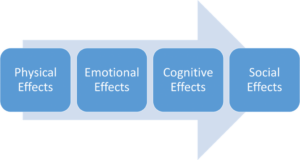What Is Sexual Violence?
What is sexual violence?
Sexual violence is the use of sexual actions and words that are unwanted by and/or harmful to another person. Sexual violence is widespread, wrong, and harmful.
Sexual violence is a broad term used to include the many types of sexual harm including–but not limited to–sexual assault, child sexual abuse, sexual exploitation, alcohol facilitated sexual assault, and harassment.
Types of Sexual Violence
 Visual sexual violence are actions that are based in being seen or watched. Some examples include having sexually explicit posters or images that are in sight of others. A similar example of visual sexual violence is using another person’s sexually explicit images and sharing those images without permission—whether it’s sending it to friends or posting it online.
Visual sexual violence are actions that are based in being seen or watched. Some examples include having sexually explicit posters or images that are in sight of others. A similar example of visual sexual violence is using another person’s sexually explicit images and sharing those images without permission—whether it’s sending it to friends or posting it online.
Verbal sexual violence is anything language based. Catcalling and street harassment are examples of sexual violence that is verbal in nature. Other actions that fall under verbal sexual violence is the use of names to demean groups. Unwanted verbal advances or sexually demeaning comments are also sexual violence.
Physical violence can include forced penetration, groping, and unwanted touching. It is the most discussed and easily understood form of sexual violence.
Some experiences of sexual violence are hurtful violations of personal boundaries but may not be considered a crime. However, that does not diminish the victim’s experience of being harmed.
Sexual Violence, Privilege, and Oppression
People of all genders and identities experience sexual violence, and people of all genders and identities can cause sexual harm. But people who identify in oppressed social categories might experience higher rates of violence with more barriers to accessing resources. People who commit violence frequently use their power and privilege to do harm. For example, a professor might use their position as the person responsible for your grade to coerce you. A manager may harass their employee, but feel they will see few consequences because of their privilege.
Our social identities influence how and if we decide to report or seek help. For example, someone who is not out as LGBTQ may be scared to get help for fear of being outed to family, friends, or the community. A person of color may be fearful reporting due to previous negative experiences with law enforcement. An employee might be afraid to report because their careers depend upon it.
Responses to Sexual Violence
 Victims/survivors of sexual violence may exhibit a wide-range of effects. Each person responds in different ways, however, many people will experience effects that are physical, emotional, social, or cognitive.
Victims/survivors of sexual violence may exhibit a wide-range of effects. Each person responds in different ways, however, many people will experience effects that are physical, emotional, social, or cognitive.
Physical effects might include: changes in eating, or sleeping habits. Some victims/survivors might develop headaches, body aches, or increase their use of substances.
Emotional effects might include: depression, anxiety, mood swings, fear, being numb or despondent. Many victims/survivors feel ashamed, angry, or guilty.
Cognitive effects might include: changes in studying or ability to attend classes, changes in ability recall information or concentrate on school or work. Other cognitive effects can include questioning their faith or spirituality or frequent and intrusive thoughts like, “Why me?” or “Did I deserve it?” Self-harm or thoughts of suicide may start or increase.
Social effects include: changes in friendships, withdrawal from usual activities or routines, difficulty with being around others or meeting regular obligations. Some victims/survivors see changes in sexual activities such as more frequent interactions or difficulty with intimacy.
No matter how someone is responding to their sexual violence, it is important to support the victim/survivor. All victims/survivors cope with trauma in unique ways. What matters most is meeting victims/survivors where they are and providing them with support.
